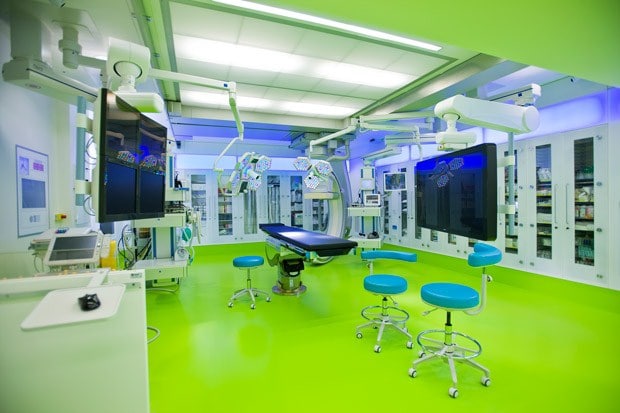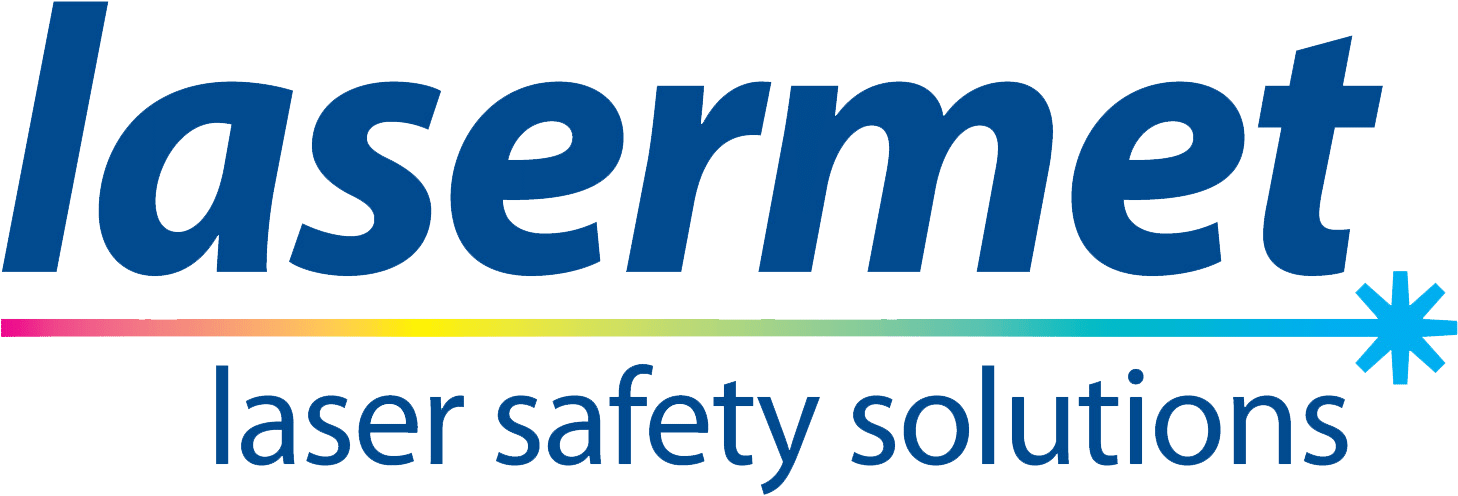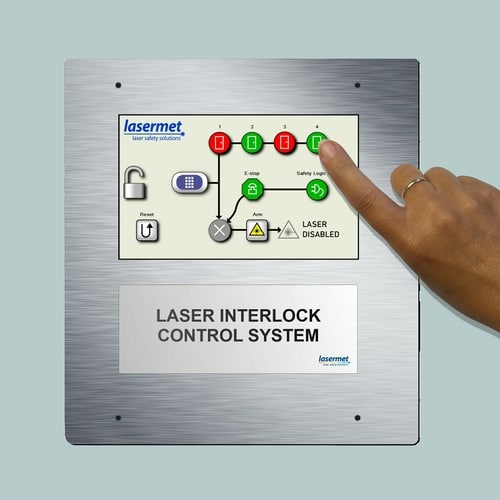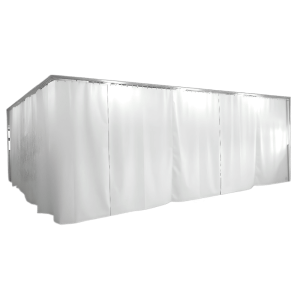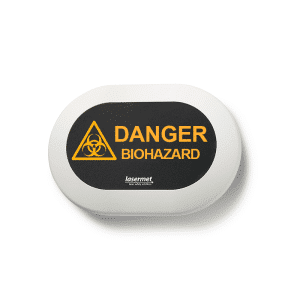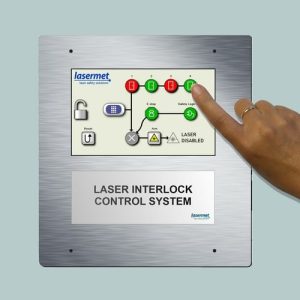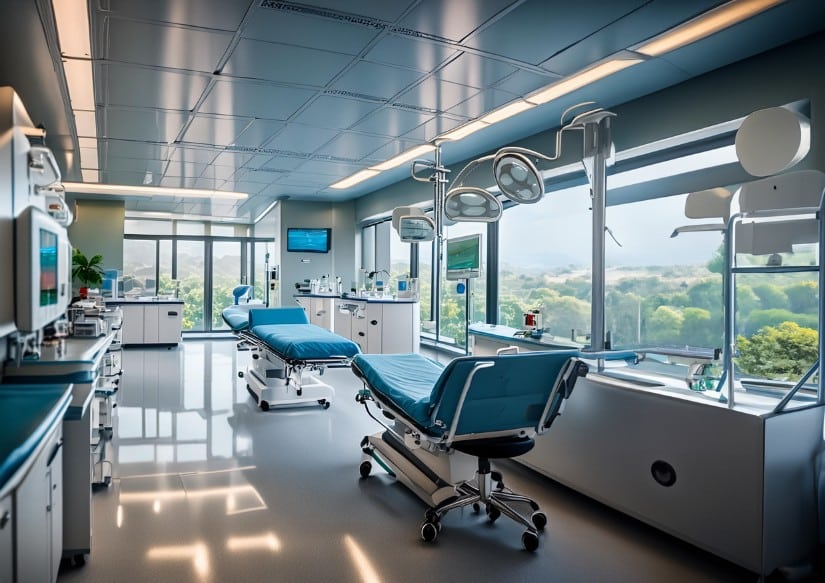
Lasermet have a long track record in the field of laser interlocks and has been manufacturing and installing these systems since 1996. Our leading ICS series of Laser Interlock® Controllers have been installed in thousands of locations across the UK and beyond. Lasermet can and will supply full turnkey laser safety solutions to suit any need or configuration.
When installing in Operating Theatres a configuration designed especially to address the particular needs of Surgeons and other theatre staff is used. This configuration called a ‘locking Interlock® system’. As well as performing Interlock® functions the system will automatically switch the illuminated laser warning signs.
Requirement for Interlocks
The Department of Health document entitled ‘DB2008: Guidance on the safe use of lasers, intense light source systems and LEDs in medical, surgical, dental and aesthetic practices’ states that (within the hierarchy for controlling safety under the heading for Equipment/Engineering), Control measures will include the device interlocks, room interlocks, warning lights, barriers and laser-proof blinds etc.
The Controlled Area is where specific protective control measures are required and includes the region where the MPE is exceeded. This applies to many if not most lasers used in operating theatre practice.
Additionally the document adopted by the UK as the Laser Safety User Guide (IEC TR 60825-14 ‘Safety of Laser Products, Part 14: A Users Guide) states that interlocks should be used for all Class 3B and Class 4 lasers unless a risk assessment can show that they are not necessary.
Laser Protection in Hospitals
Traditionally, interlocks have been unpopular in hospitals as they can disable the laser at the time when the surgeon wants to use it. Lasermet have addressed this problem by designing a laser Interlock® system which both protects the staff and protects the integrity of the operation by preventing interruptions to the laser. This is achieved by using maglocks on the doors which are powered up whenever the laser is enabled, so preventing casual opening of doors.
Authorised override by the use of a keypad code enables suitably prepared staff to still enter or leave the theatre without interruption to the laser. This system has been installed in many operating theatres enabling lasers to be used uninterrupted and without risk to staff.
The Lasermet Solution
The ideal solution for Interlock® control for operating theatres is the ICS-TOUCH Interlock® Controller.
The ICS-TOUCH provides touchscreen monitoring and control for operating theatres and X-ray machines with easy-to-use touchscreen technology able to monitor and control interlocked doors, roller blinds, emergency stops, and with a secure keypad access point.
It also meets all safety requirements for full dual channel safety to ISO 13849-1 Performance Level ‘e’ (PL ‘e’) .
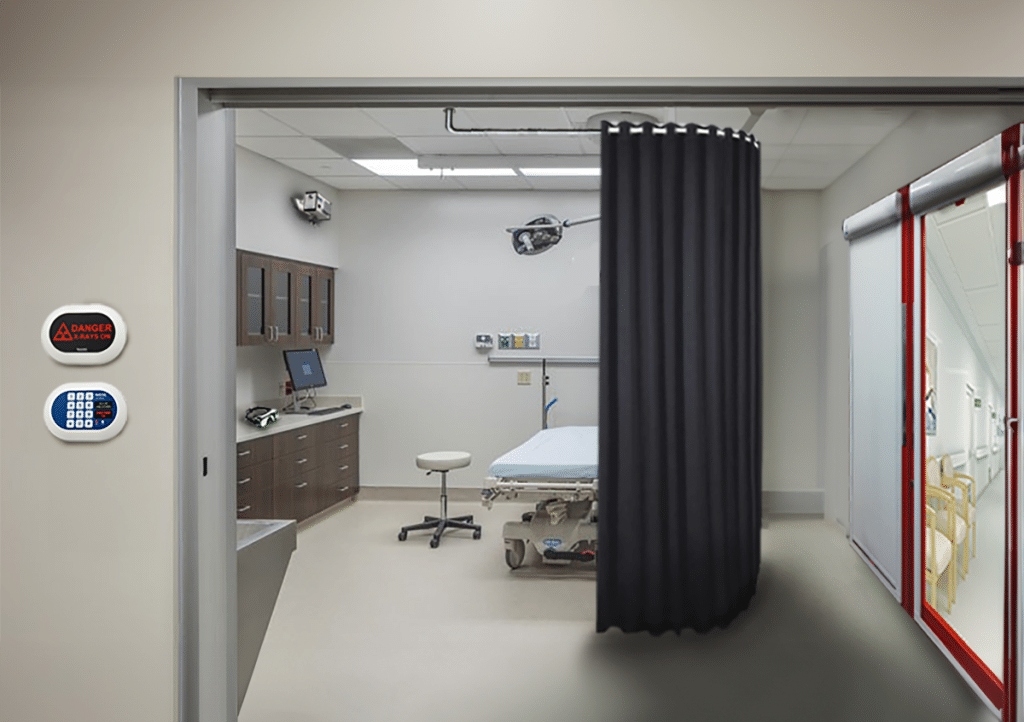
Laser Safety in Hospital Theatres
The need for laser safety systems and laser safety equipment in hospital operating theatres, to conform to the relevant laser safety standards and hospital requirements, has been addressed by Lasermet for many years. Ensuring the safety of patients, staff and other personnel is paramount and this has been formalised in the following guidance documents.
HBN26 (issued by NHS Estates) and DB2008 (issued by the MHRA) are two of the relevant guidance documents in the UK.
The MHRA is an executive agency of the Department of Health and is responsible for the regulation of medicines and medical devices and equipment used in healthcare and the investigation of harmful incidents. It uses the following document:
DB2008 (03) Device Bulletin
Guidance on the safe use of lasers, intense light source systems and LEDs in medical, surgical, dental and aesthetic practices
The document is suitable for all personnel who are associated with the purchase, supply, installation, use and maintenance of medical, dental and cosmetic lasers, IPL systems and LEDs. The first part of Section 5.1 of DB2008 (03) refers to safety mechanisms and controlling hazards.
Hierarchy for Controlling Safety
- Equipment/ Engineering
- Administration
- Personal
To minimise risk, equipment/engineering and administration safety control measures should be established first, prior to introducing personal protective measures.
Equipment/ Engineering
Control measures will include the device interlocks, room interlocks (if appropriate), warning lights, barriers and laser-proof blinds etc.
A laser ‘Controlled Area’ is the region around the laser where people may be present and in which specific protective control measures are required. The Controlled Area should include the region around the equipment where the maximum permissible exposure (MPE) level is exceeded. Maximum permissible exposure, MPE, is the highest level of laser exposure at the eye or skin that is generally considered safe.
If within the equipment area the level of direct, reflected, or scattered optical radiation achieved during normal operation, exceeds the applicable MPE, the area will be subject to control and supervision for the purpose of protection from the radiation hazard.
Controlling Access
A number of methods can be employed to control access when the laser or IPL is in use. The mechanism most suitable to a particular environment should be employed. These may include the following:
- Knock and wait to be admitted
- Key pad lock
- Interlocks (door or equipment)
HBN26 Facilities for Surgical Procedures – NHS Estates
NHS Estates describe this document as Guidance on facilities for in-patient operating theatres in acute general hospitals and its purpose is Best Practice Guidance. Relevant extracts from this document are as follows…
Door Covers
4.79 Doors within the operating suite all doors should be fitted with vision panels capable of being obscured, and have laser proof blinds…
Theatre Warning Light
4.91 Each theatre requires a light warning when laser surgery and X-rays are being undertaken. The lights should be located in the corridor above the theatre doors…
Use of Lasers in the Operating Theatres
7.120 Where lasers are to be used in an operating theatre, safety precautions in accordance with BS EN 60825 should be employed, including the provision of warning lamps at the entrances to the theatre and door interlocks preventing entry to the theatre when the laser is in use…
Lasermet’s laser safety systems meet all the requirements of these documents and the relevant laser safety standards.
